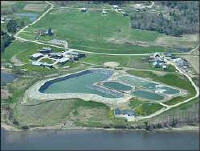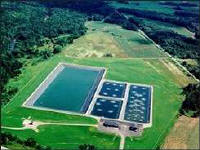 |
|
 |
| Mission | Search | Acknowledgements | Discussion Group | Contact Us | Links | ||
| ||||||
|
Maine DEP Monthly
Maine and WEF's
Penobscot Watershed and Development of a TMDL
Maine Rural Water
Maine
Wastewater Control Association |
AERATED
LAGOON TECHNOLOGY
|
|
|
Effluent BOD5 - A Misleading Parameter For the Performance of Aerated Lagoons Treating Municipal Waste |
|
|
Aerated Lagoon Effluents |
|
|
Control of Algae |
|
|
Nitrites and Their Impact on Effluent Chlorination |
|
|
Aerated Lagoons for Secondary Effluent |
|
|
Nitrification in Aerated Lagoons With Intermittent Sand Filters |
|
|
Mixed Liquor Recycle (MLR) Lagoon Nitrification System |
|
|
Facultative Lagoons - A Different Technology |
|
|
Sludge Accumulation in High Performance Aerated Lagoon Systems |
|
|
Ammonia Feed Back in the Sludge of a CFID Nitirification System |
|